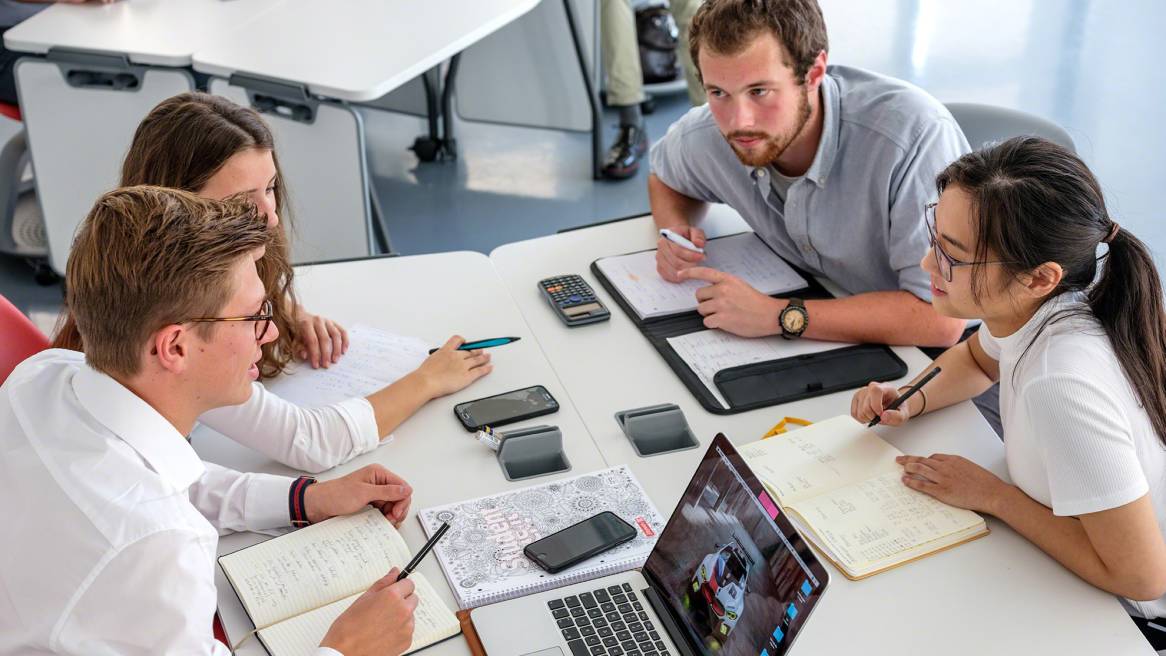Building the Classroom of the Future
How one university is using Steelcase Education classrooms to prepare students for a rapidly changing world
21st-century skills — adaptability, empathy, global awareness, creativity, innovation — they’re the skills employers are looking for, and the one’s students at the Munich University of Applied Sciences (UAS) cultivate and grow. Located in the city-center, UAS is the largest university of its kind in Bavaria with almost 18,000 students and one of the largest in Germany. With more companies on the German Stock Exchange headquartered in Munich than any other German city, UAS exists in a business ecosystem that is ripe with entrepreneurship from startups to international powerhouses. With a strong connection to industry, the school’s curriculum integrates practical, hands-on work experience into the student education journey, living the belief that knowledge is gained through active participation in the classroom versus the traditional lecture-based passive role that university students play.
This behavior shift from passive student to active learner is what Dr. Klaus Kreulich, Vice President of UAS, is trying to accomplish with the Classroom of the Future program, a transdisciplinary project that deals with the impact of physical space on the quality of teaching and student learning. The program is an element of a major project the university won called Fit for the Future provided by the federal and statewide ministries of education to develop quality learning and teaching programs. “The main idea was that all throughout the university should be classrooms which allow developing soft skills. And which in the second step, should be equipped with digital technology,” says Kreulich.
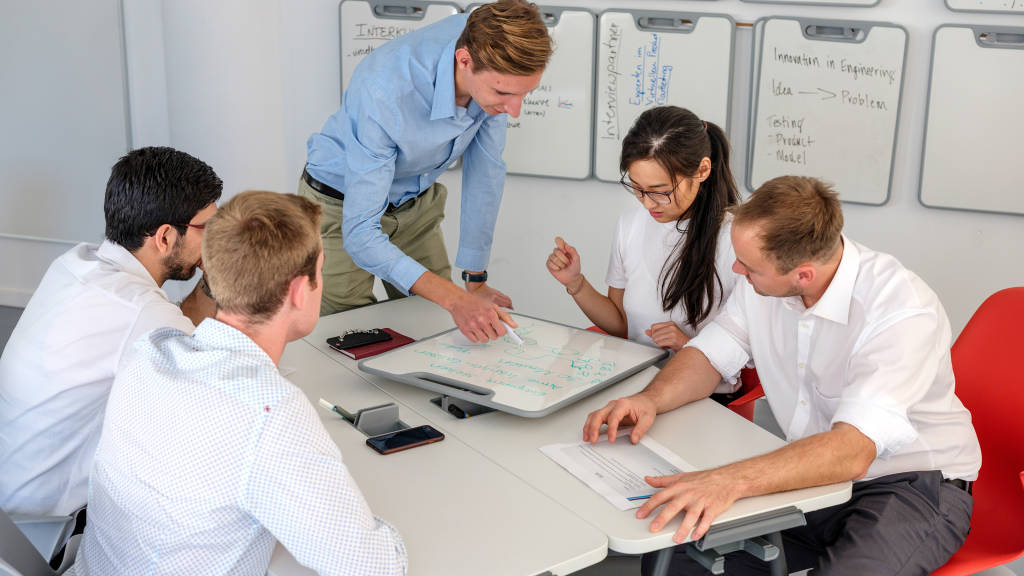
Soft skills are an emphasis for Kreulich, as they are one in the same as the 21st-century skills so often discussed. “The university and I are convinced that soft skills are very important in the future, more important than 30 years ago,” he says. Kreulich divides soft skills into three main dimensions — entrepreneurship, sustainability and interculturality — and knew the traditional learning environments and teaching methods at UAS needed to change to foster them. “To develop competencies in these interdisciplinary fields, of course, we need special learning methods, special concepts, and special learning environments, classrooms which allow us to build skills in these fields.”
Professor Peter Duerr, chair of knowledge and communication management, is another key change agent for updated educated environments at UAS. He knew from the moment he arrived that the classrooms would need to change if students were to thrive. “When I started 10 years ago at the university, I was absolutely depressed by the environments that we were performing our teaching tasks in. So little has changed in education environments, what happens in the average classroom is the same as it was in the middle ages.”
Movement shifts mindsets
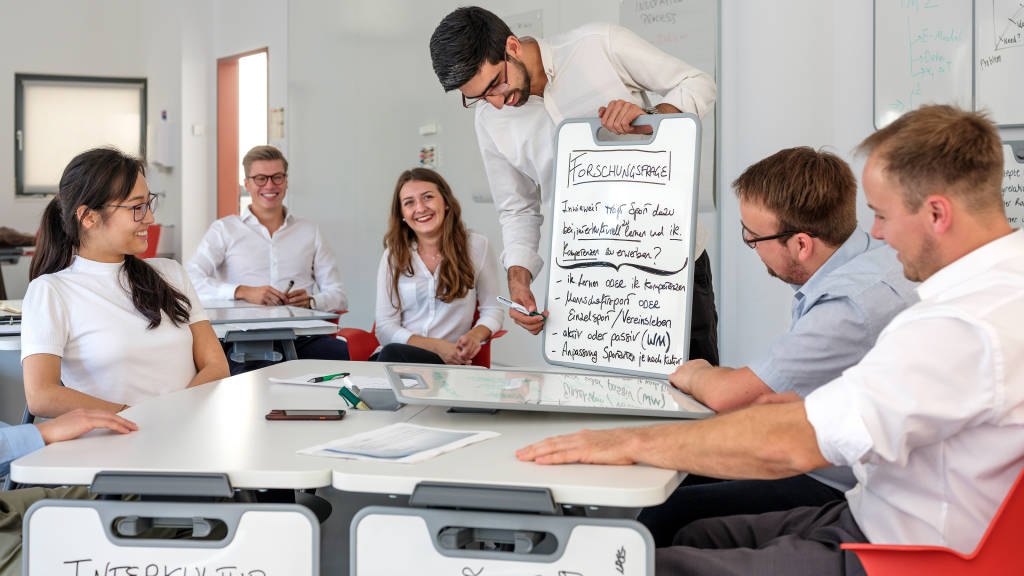
After experiencing success working with Steelcase Education to create the Steelcase Creative Hall in the Strascheg Center for Entrepreneurship, UAS knew Steelcase was the right partner to develop ideas for innovative education spaces. The university formed a cross-functional group of professors, facility managers, information technology professionals and experts in education space design from Steelcase Education to evaluate needs and goals. The result — move forward creating three new classrooms, changing spaces in traditional departments like mechanical engineering. “Before with the blackboard, the goal was to tell as much as possible in one hour. But now, based on this new room, more and more of the mechanical engineering professors want to try new teaching methods. I’m very sure that we will, step by step, develop more creativity within our mechanical engineering students and that’s great.”
It’s the movement and flexibility of the Steelcase Education furniture that creates the right environment for UAS. “In one room we used the Node chair, which is one of the popular elements and did something very simple,” describes Duerr. “We created two fronts. We have a digital front, which is the beamer projection front, and we have an analog front which is where we write on the wall. You can only realize these new kinds of setups if you have the furniture that allows you to turn and change your focus. That is in the physical realm, changing perspective for me is equivalent to the mental realm, the cognitive realm.”
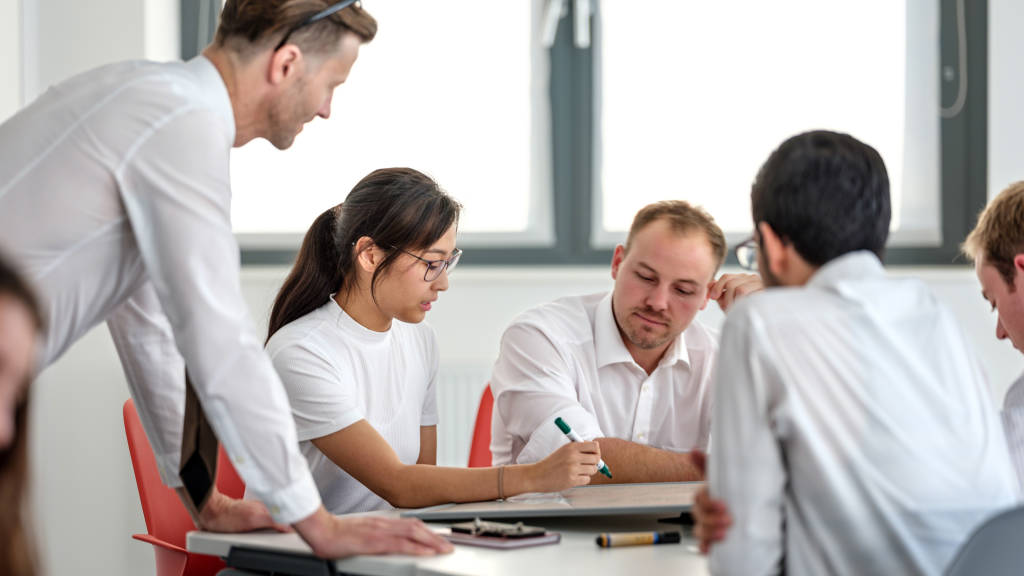
As students shift their chairs and tables, they simultaneously shift their mindsets. “To have flexibility in a classroom, which gives the teacher the chance to act more as a coach than as a teacher is a big thing from my perspective,” says Kreulich. “That means that students work together, talk together. They are activated. They leave their role as listeners and change to active people.” Duerr echoes Kreulich, saying the biggest change in students in the new classrooms is that they, “become creators and not consumers. It’s that simple.”
Collaborate to innovate
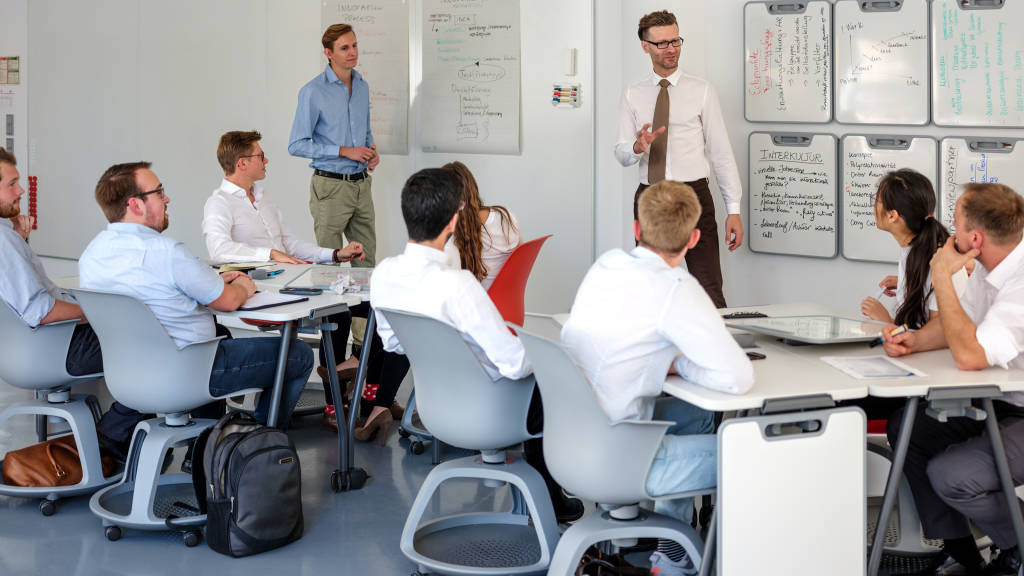
Collaboration sounds simple, but traditional classroom setups with the teacher at the front talking for an hour while students sit in chairs that only face forward hinder the ability for students to engage. “If you have a room where the chairs and the tables are fixed to the ground, and you ask the students, “Talk to your neighbor,” and they cannot move, they will do it for a few minutes, but after five or 10 minutes, everybody is working by themselves,” says Kreulich. By swapping fixed furniture for Steelcase Education solutions, UAS influenced both the students and professors to change bad habits. Students no longer walk in and expect the professors to do all the work during the lecture and professors don’t see the classrooms as a place to preach what they know, but a place to engage students in the material through movement, interaction and collaboration.
Kreulich identifies collaboration as the most important aspect of creativity, critical to the key soft skill of entrepreneurship. “The most important thing to build up creativity is to solve problems together with other people. That means, we have to offer learning situations in which students can work through problems, and people with different kinds of knowledge come together.” Movement again is what UAS identifies as a catalyst for the entire classroom, sparking ideas and opening up new avenues for conversation. “There’s a completely different kind of conversation that happens if you don’t stay in one place, but move around, walk around,” says Duerr. “Having different people lead the conversation, changes the dynamics of the conversation. Movement is essential because it’s the only thing that brings the student out of this passive role of consuming input.”
When it comes to sustainable entrepreneurship, creativity is vital to innovation — another crucial skill students need says Kreulich. “After finding an idea, it is important to bring this idea into life. Students need to reflect where it could be used and who can profit from it and that means innovative thinking.” Experience innovating is where UAS’ close ties to industry leaders come in, providing a differentiating factor for students. “To develop innovative thinking, we bring students in contact with companies. We ask the companies to get into a discussion, figure out new methods of problem-solving and how the students’ ideas could be used in the company. So, design thinking, for example, is a very important method.”
The future of education
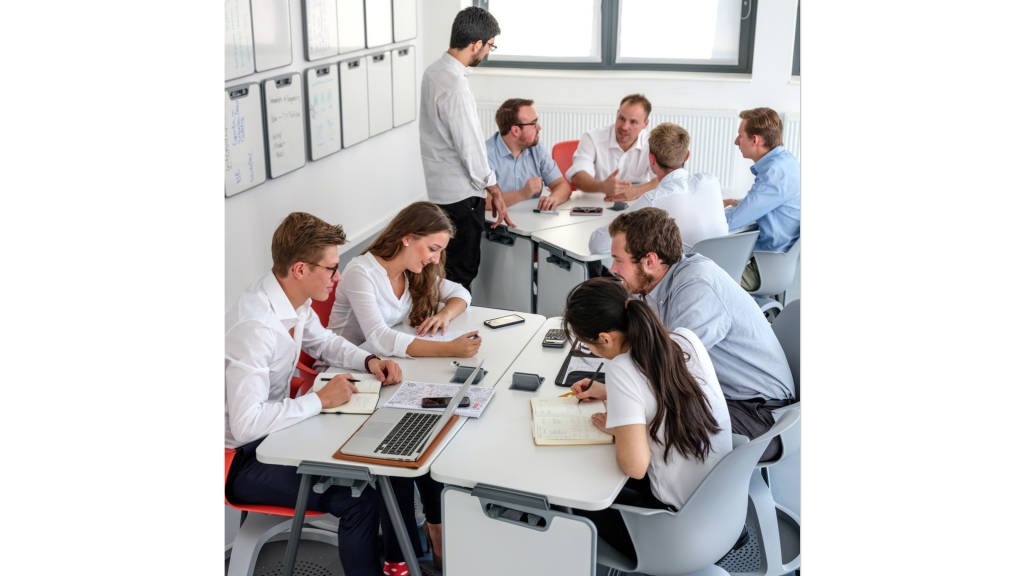
To get professors on board with the new classrooms was no easy feat for Kreulich. “There were a lot of skeptics. It was more a favor for me to try it from the perspective of the department, but later on, when someone from Steelcase Education came to Munich to open the room, they introduced and explained all the things the professors could do in the room, that was a great starting point,” explains Kreulich. Duerr says today the redesigned rooms are the ones in highest demand by professors experimenting with innovative teaching formats.
UAS sees more changes for their university and education in general as the future of learning continues to evolve. “The whole idea of space will be more permeable, inside and outside, public and private space will be much more interlinked. There will be no strict distinction between formal and informal learning spaces,” says Duerr. “You could even claim the university that we know today will disappear. This whole concept that education has to take place in a separate facility could be outdated. Then, maybe what the university is today, will be a different kind of place. It will be one of encouraging specific kinds of interaction that is more similar to the old Greek agora than to the church schools of the middle ages.”
Kreulich also underscores the idea that learning will move beyond university walls and the nature of a university itself will change. “Learning will accrue at every place, at every time, it will not stop at the moment when you leave the university. Knowledge is everywhere. A lot of people think this will end up in a situation where everybody is learning by himself, but I’m absolutely convinced that one important part of learning is the social environment,” he says.”
It’s this continuous learning and thirst for education that UAS hopes to ignite in their students. “Every time I see learning situations in the Steelcase Education room, my perception is that students are more motivated, enthusiastic.” With Steelcase Education classrooms UAS is getting students excited about learning and instilling the skills of collaboration, creativity and innovation which they will continue to hone throughout their lives.

